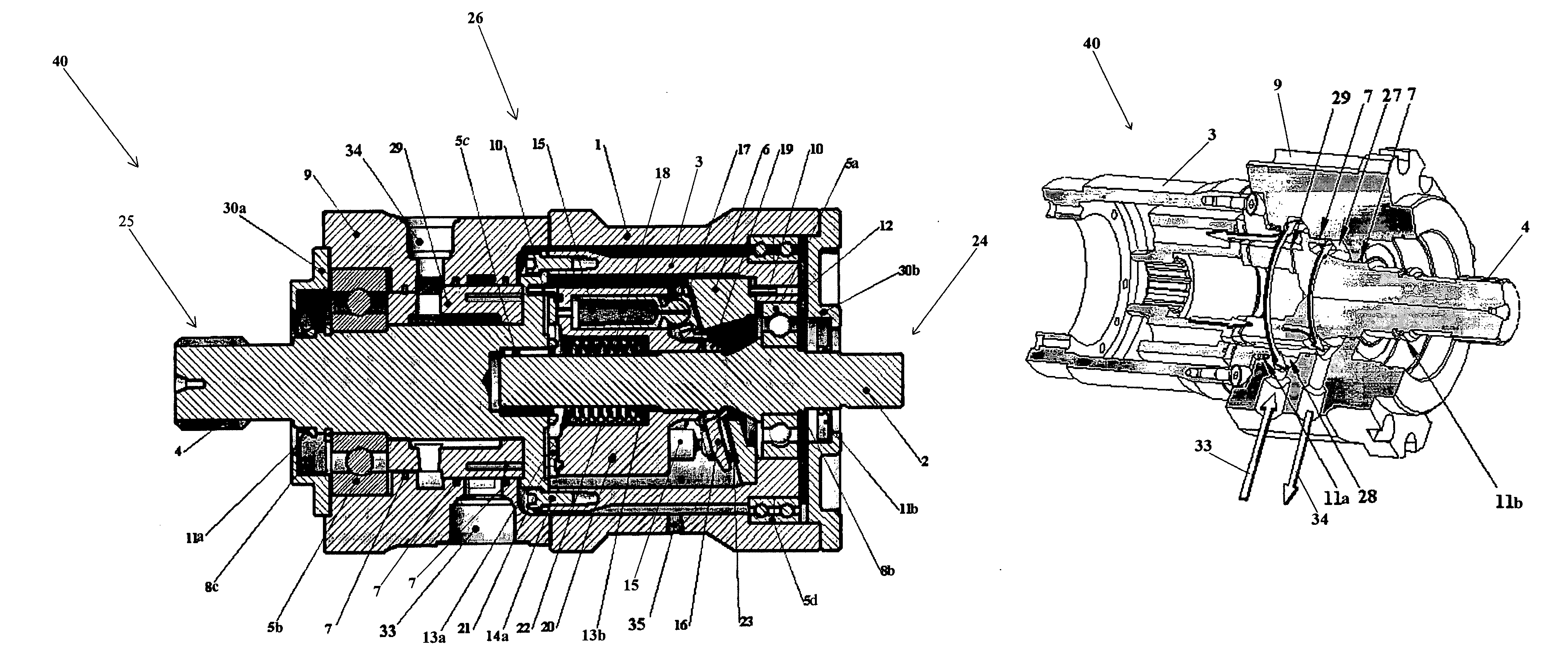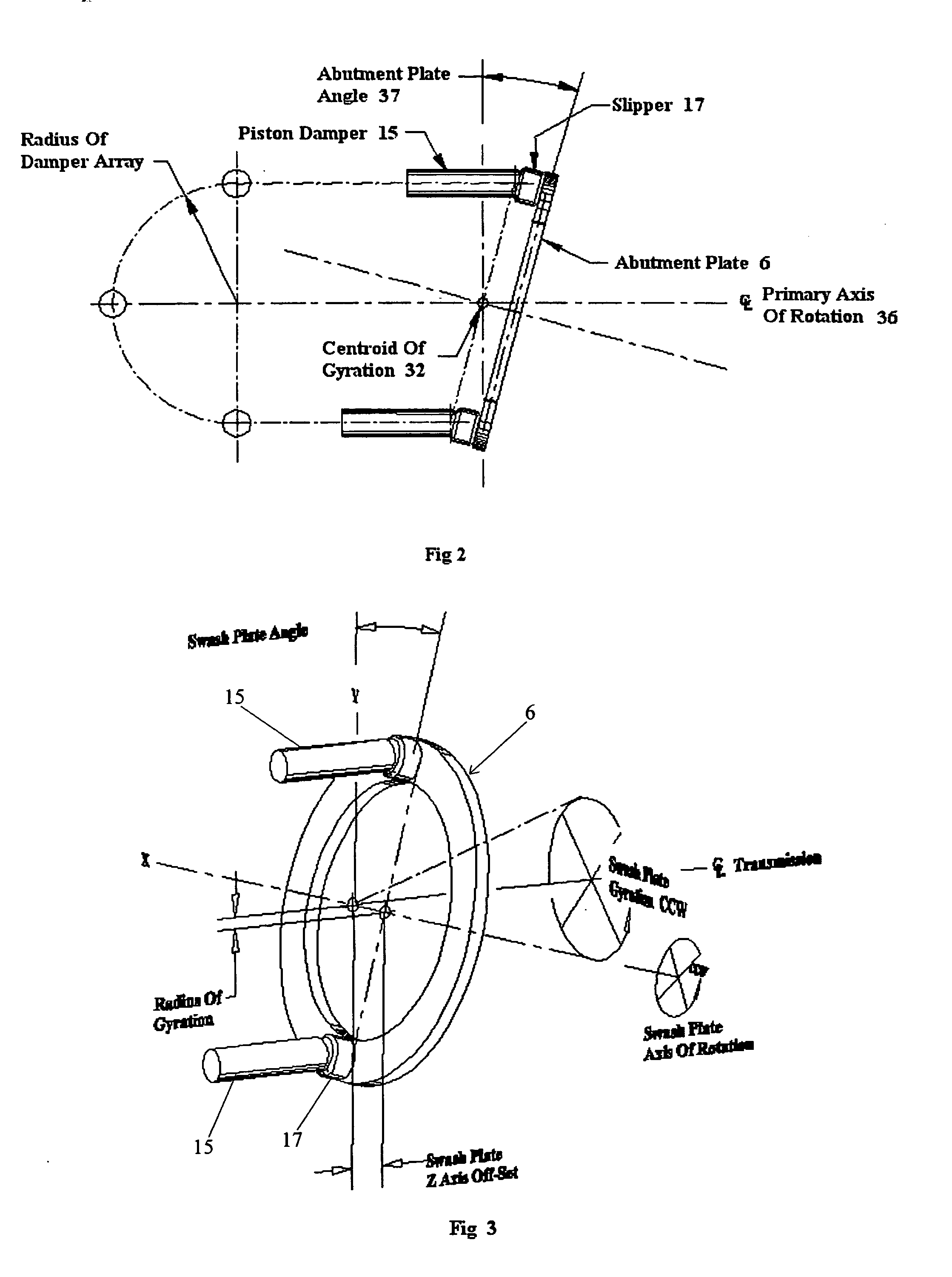Precession modulated continuously variable transmission
- Summary
- Abstract
- Description
- Claims
- Application Information
AI Technical Summary
Benefits of technology
Problems solved by technology
Method used
Image
Examples
Embodiment Construction
[0028] The present invention relates to a precession modulated continually regulated transmission (PMT). Embodiments of the PMT, the precession modulation control assemblies and the methods of operation are shown in the drawings and discussed as follows.
[0029] As shown in FIG. 1, an embodiment of the PMT has three principal component groups coaxially arrayed. At the center of the transmission 40 is a core group 24 enclosed by a transfer case group 25. Surrounding the core group 24 and the transfer case group 25 is the housing group 26. The core group 24, transfer case group 25 and housing group 26 are comprised of various parts set forth in FIG. 9, and are further discussed below with respect to FIGS. 10, 11 and 12, respectively, and are shown cooperating together in FIG. 1.
[0030] The preferred embodiments of the core group 24 use a hydraulic medium for damping with a system of damper pistons 15 axially arrayed within a cylinder block or carrier plate 20 to which power is imparted...
PUM
 Login to View More
Login to View More Abstract
Description
Claims
Application Information
 Login to View More
Login to View More - R&D
- Intellectual Property
- Life Sciences
- Materials
- Tech Scout
- Unparalleled Data Quality
- Higher Quality Content
- 60% Fewer Hallucinations
Browse by: Latest US Patents, China's latest patents, Technical Efficacy Thesaurus, Application Domain, Technology Topic, Popular Technical Reports.
© 2025 PatSnap. All rights reserved.Legal|Privacy policy|Modern Slavery Act Transparency Statement|Sitemap|About US| Contact US: help@patsnap.com



